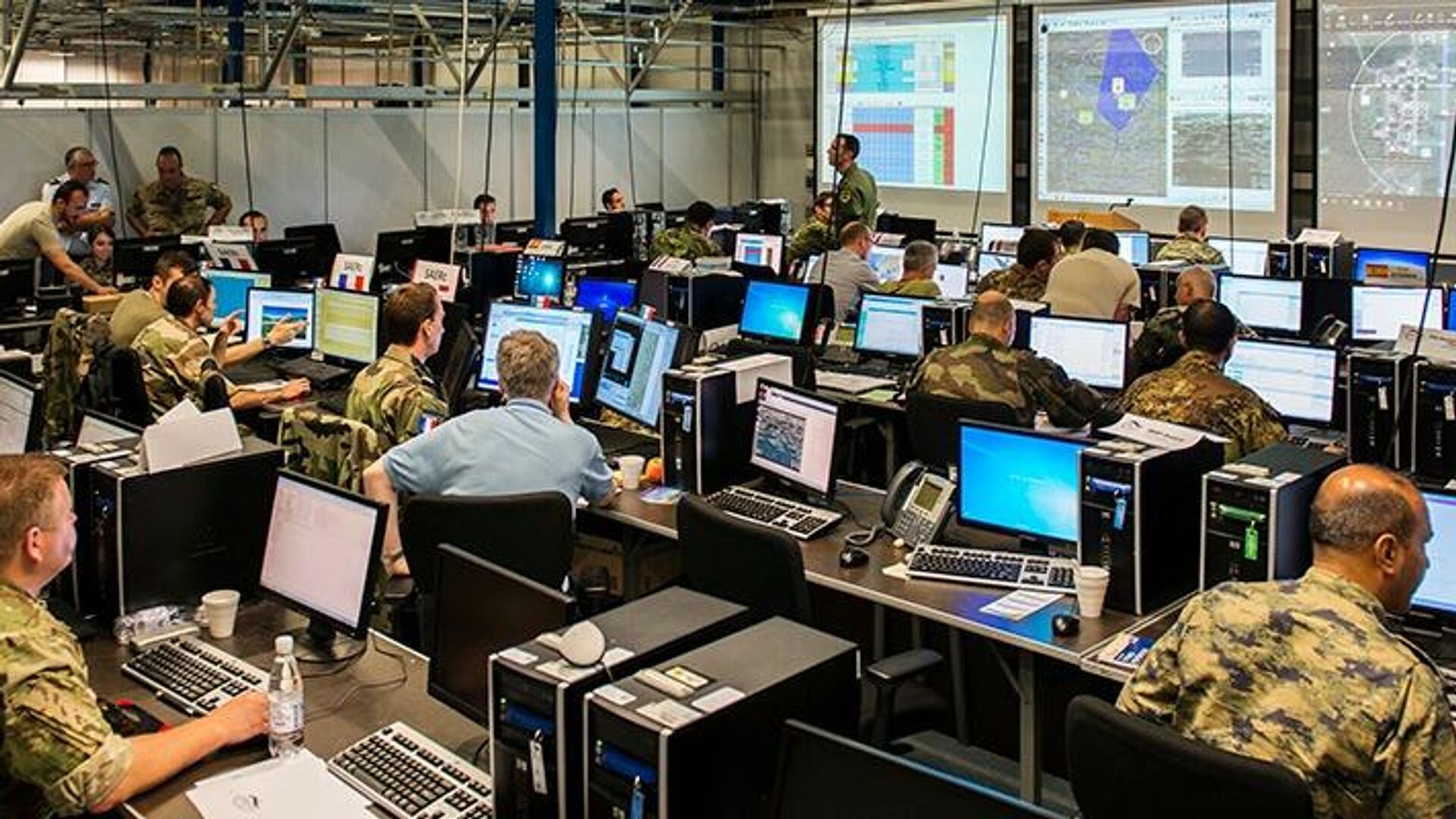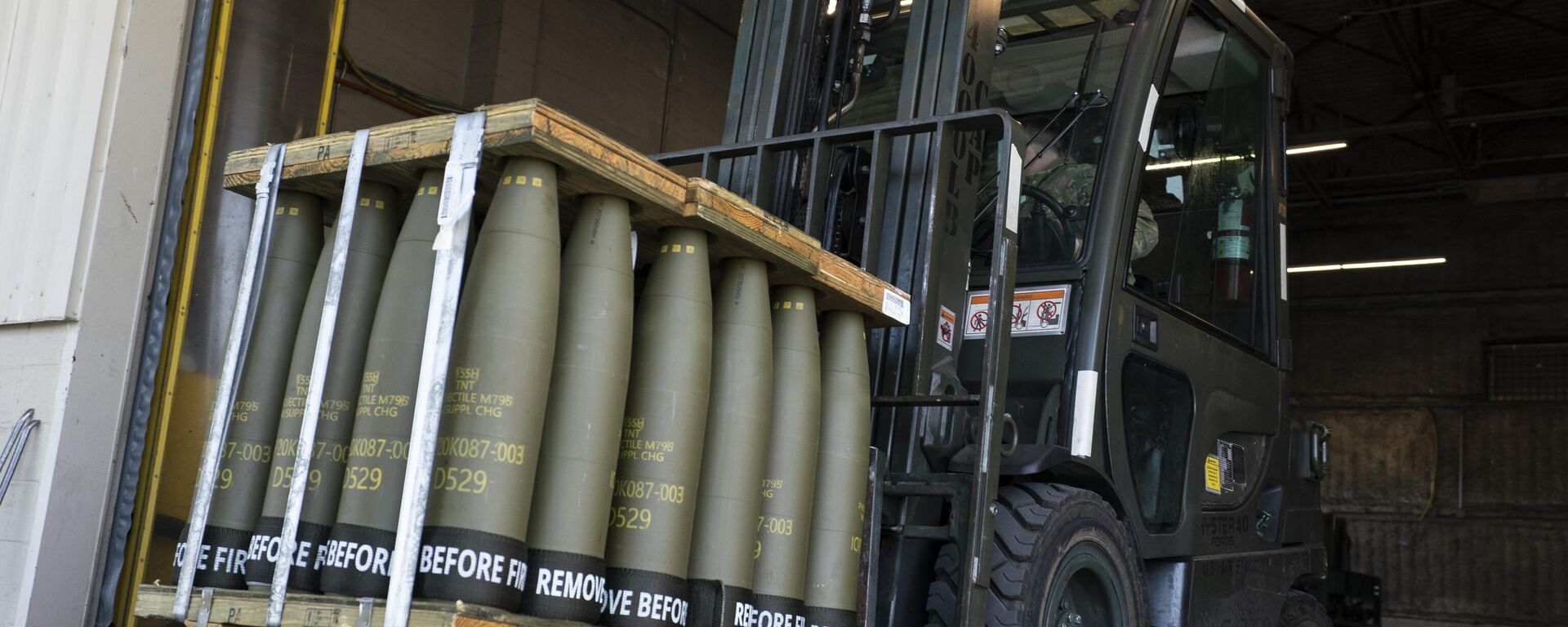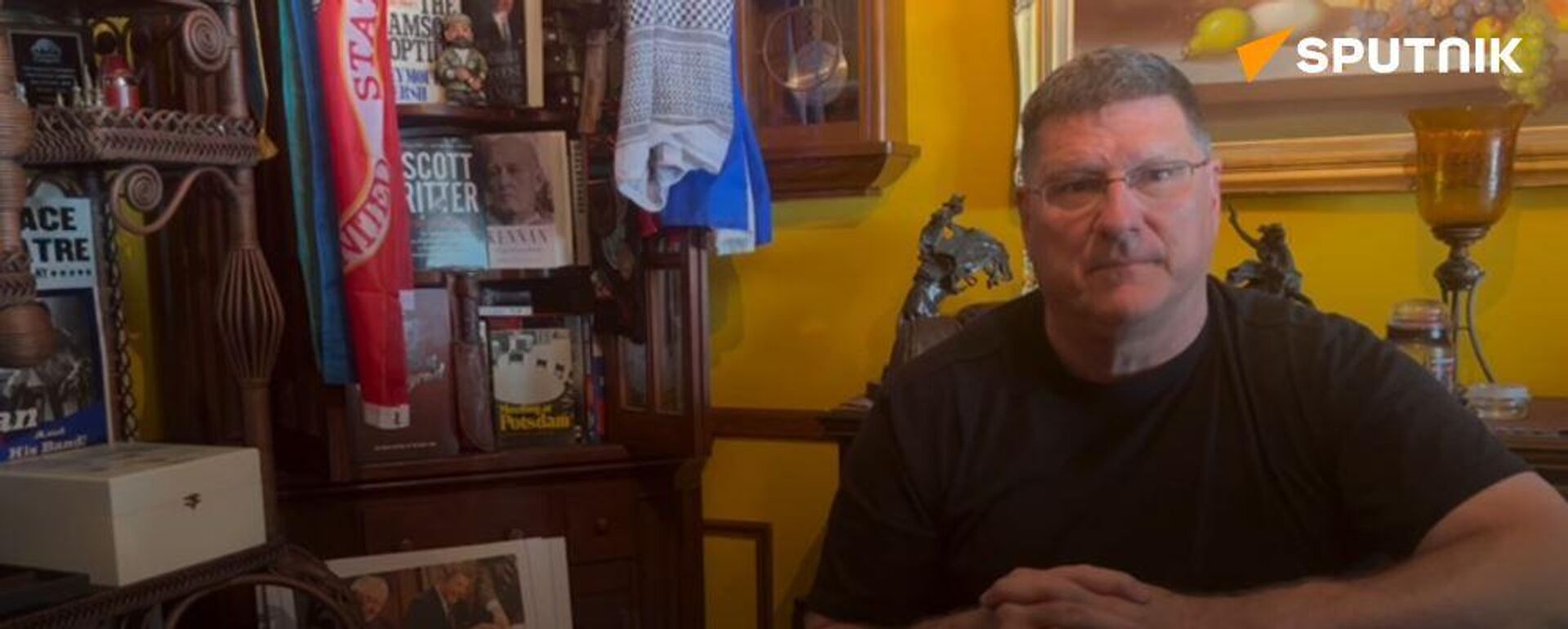https://sputnikglobe.com/20240601/nato-100-involved-in-aiming-approval-of-ukrainian-attacks-deep-inside-russia-analysts-1118740855.html
NATO ‘100% Involved’ in Aiming, Approval of Ukrainian Attacks Deep Inside Russia: Analysts
NATO ‘100% Involved’ in Aiming, Approval of Ukrainian Attacks Deep Inside Russia: Analysts
Sputnik International
The US, the UK and other NATO allies lifted formal restrictions limiting Ukraine’s use of its Western-sourced long-range missiles to attack targets deep inside Russia on Friday. The move constituted a crossing the Rubicon moment for the bloc, which can no longer claim it’s not a participant in the conflict, Russian defense experts told Sputnik.
2024-06-01T19:14+0000
2024-06-01T19:14+0000
2024-06-01T19:22+0000
analysis
alexei leonkov
andrei koshkin
dmitry kornev
ukraine
russia
kiev
nato
starlink
https://cdn1.img.sputnikglobe.com/img/07e8/06/01/1118741024_120:0:831:400_1920x0_80_0_0_d06825f05ef2c56627ae362a5771ebbf.jpg
Independent Western observers have sounded the alarm over NATO countries’ decision to partially lift restrictions designed to keep the Kiev regime on a leash and stop it from striking deep into the Russian hinterland using alliance-sourced weapons, expressing deep concerns that the move may provoke an escalation that can easily spiral out of control.Russian officials reacted to NATO’s decision to scrap the restrictions calmly but firmly, with Kremlin spokesman Dmitry Peskov telling reporters on Friday that attempts to target Russia using American-made weapons have already taken place, “clearly demonstrat[ing] the extent of the United States’ involvement in this conflict.”Former president Dmitry Medvedev, now the deputy chief of Russia’s Security Council, warned that Russia will proceed from the principle that all long-range weapons used by Ukraine against Russia “are directly controlled by military personnel of NATO countries,” warning that the alliance’s engagement in Ukraine is not just ‘military assistance,’ “but participation in a war against us” which constitutes a possible “casus belli.”Russian military experts have confirmed to Sputnik that Moscow’s concerns about long-range strike systems used by Ukraine being controlled by NATO are justified, saying Kiev simply lacks the military and technical capabilities to engage in long-range strikes without serious help from its foreign patrons.The missiles are guided using Western satellites, Leonkov noted. Aerial reconnaissance, target verification and monitoring out for air defenses in the vicinity of targets is conducted by US Poseidon airborne early warning aircraft and Global Hawk drones, and intelligence data is processed and analyzed at a special center near Ramstein Airbase in Germany, which operates the AI-assisted Palantir Maven object recognition system, the observer added.Veteran military and international affairs specialist Andrei Koshkin concurs with Leonkov’s assessment, pointing out that Moscow’s view of the high-precision weapons systems in Ukraine’s possession is that their operation is made possible “exclusively” thanks to satellite intelligence which “NATO countries and the USA kindly share with the Armed Forces of Ukraine.”“Accordingly, I am confident…that the United States and other NATO countries are preparing this intelligence and taking part in the preparation of flight missions. Without them, no high-precision strikes deep into Russian territories would be possible. This, in my view, means NATO getting drawn into the conflict taking place in Ukraine. It’s one thing to help create satellites, another to request data, and another thing still using them to help guide missiles,” the observer said, adding that from the military-technical side of things there is now “100% NATO participation.”This likely includes everything from real-time intelligence to NATO operational information direct from reconnaissance assets – be they aircraft, drones or satellites, Kornev stressed.
https://sputnikglobe.com/20240601/biden-letting-ukraine-strike-russia-risks-moving-from-proxy-to-real-war---ex-us-diplomat-1118735361.html
https://sputnikglobe.com/20240531/scott-ritter-ukraines-nato-allies-dragging-world-into-nuclear-armageddon--1118717524.html
https://sputnikglobe.com/20240531/russia-may-see-ukrainian-long-range-attacks-as-precursor-to-nuclear-strike-ex-dod-analyst-fears-1118724278.html
ukraine
russia
kiev
Sputnik International
feedback@sputniknews.com
+74956456601
MIA „Rossiya Segodnya“
2024
News
en_EN
Sputnik International
feedback@sputniknews.com
+74956456601
MIA „Rossiya Segodnya“
Sputnik International
feedback@sputniknews.com
+74956456601
MIA „Rossiya Segodnya“
will long-range strikes in russia trigger world war, is nato planning ukrainian strikes, is nato involved in ukrainian strikes, is nato aiming ukrainian missiles
will long-range strikes in russia trigger world war, is nato planning ukrainian strikes, is nato involved in ukrainian strikes, is nato aiming ukrainian missiles
NATO ‘100% Involved’ in Aiming, Approval of Ukrainian Attacks Deep Inside Russia: Analysts
19:14 GMT 01.06.2024 (Updated: 19:22 GMT 01.06.2024) The US, the UK and other NATO allies lifted formal restrictions limiting Ukraine’s use of its Western-sourced long-range missiles to attack targets inside Russia on Friday. The move constituted a 'crossing the Rubicon' moment for the bloc, which can no longer claim it’s not directly involved in the conflict, Russian defense experts told Sputnik.
Independent Western observers have sounded the alarm over NATO countries’ decision to
partially lift restrictions designed to keep the Kiev regime on a leash and stop it from striking deep into the Russian hinterland using alliance-sourced weapons, expressing deep concerns that the move
may provoke an escalation that can easily
spiral out of control.
Russian officials reacted to NATO’s decision to scrap the restrictions calmly but firmly, with Kremlin spokesman Dmitry Peskov
telling reporters on Friday that attempts to target Russia using American-made weapons have already taken place, “clearly demonstrat[ing] the extent of the United States’ involvement in this conflict.”
Former president Dmitry Medvedev, now the deputy chief of Russia’s Security Council, warned that Russia will proceed from the principle that all long-range weapons used by Ukraine against Russia “are directly controlled by military personnel of NATO countries,” warning that the alliance’s engagement in Ukraine is not just ‘military assistance,’ “but participation in a war against us” which constitutes a possible “casus belli.”
Russian military experts have confirmed to Sputnik that Moscow’s concerns about long-range strike systems used by Ukraine being controlled by NATO are justified, saying Kiev simply lacks the military and technical capabilities to engage in long-range strikes without serious help from its foreign patrons.
“There is no contribution on the Ukrainian Armed Forces’ part in guiding ATACMS, Storm Shadow or SCALP missiles toward Russian targets. The Ukrainian operators of these systems essentially act as ‘launch buttons’ and nothing more. The entire process of planning missions, and the orders’ transfer to the missiles via Starlink, as well as processing of intelligence information for Kiev, is done by its Western allies. Thus, we’re talking about NATO’s actual participation in the conflict,” veteran Russian military observer Alexei Leonkov explained.
The missiles are guided using Western satellites, Leonkov noted. Aerial reconnaissance, target verification and monitoring out for air defenses in the vicinity of targets is conducted by US Poseidon airborne early warning aircraft and Global Hawk drones, and intelligence data is processed and analyzed at a special center near Ramstein Airbase in Germany, which operates the AI-assisted Palantir Maven object recognition system, the observer added.
“Ukraine did not need to adopt the navigation and targeting equipment of its Su-24 and Su-27 aircraft for the use of Storm Shadow and SCALP missiles. The flight mission is entered in advance by Western specialists, with Ukrainian pilots simply pressing the 'fire' button,” Leonkov stressed.
Veteran military and international affairs specialist Andrei Koshkin concurs with Leonkov’s assessment, pointing out that Moscow’s view of the high-precision weapons systems in Ukraine’s possession is that their operation is made possible “exclusively” thanks to satellite intelligence which “NATO countries and the USA kindly share with the Armed Forces of Ukraine.”
“Ukraine has no other way to independently acquire such data. Kiev has no such capabilities,” Koshkin emphasized.
“Accordingly, I am confident…that the United States and other NATO countries are preparing this intelligence and taking part in the preparation of flight missions. Without them, no high-precision strikes deep into Russian territories would be possible. This, in my view, means NATO getting drawn into the conflict taking place in Ukraine. It’s one thing to help create satellites, another to request data, and another thing still using them to help guide missiles,” the observer said, adding that from the military-technical side of things there is now “100% NATO participation.”
“I think that since the Ukrainian Armed Forces are switching to NATO standards and constantly boasting that they are perhaps ‘one of the best NATO armies’ in terms of the use of modern technologies, it’s highly likely that they are already using, or have access to all of the technological innovations NATO has at its disposal,” says Dmitry Kornev, another respected Russian military observer.
This likely includes everything from real-time intelligence to NATO operational information direct from reconnaissance assets – be they aircraft, drones or satellites, Kornev stressed.





